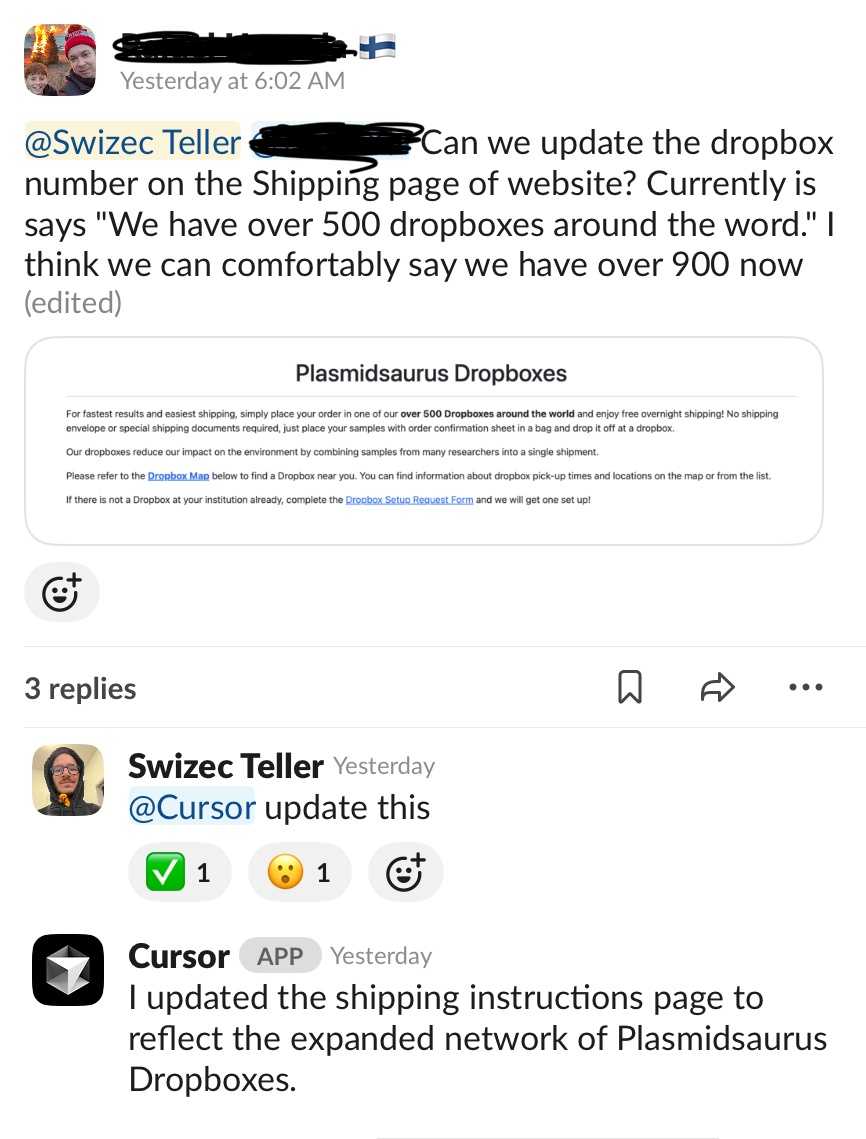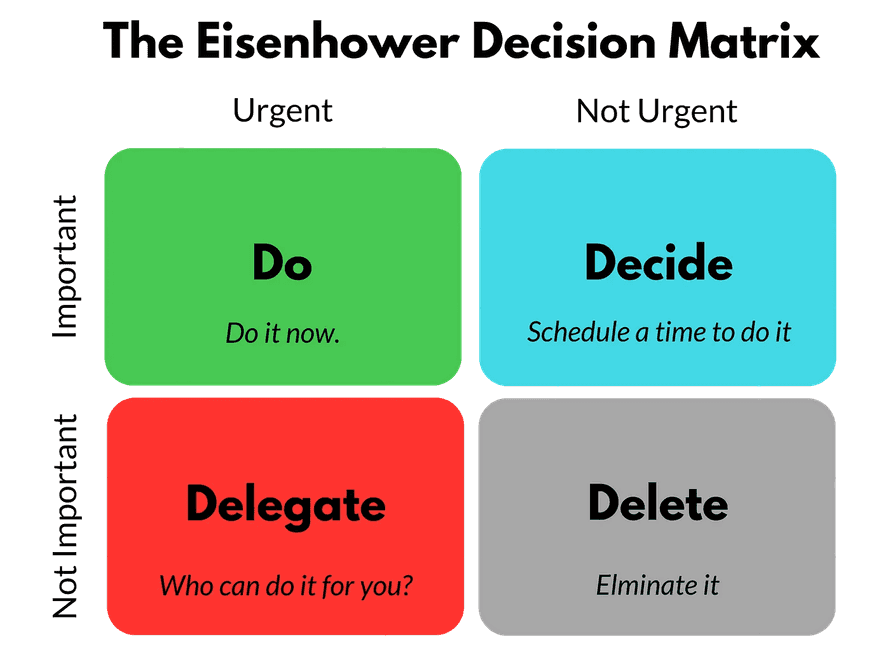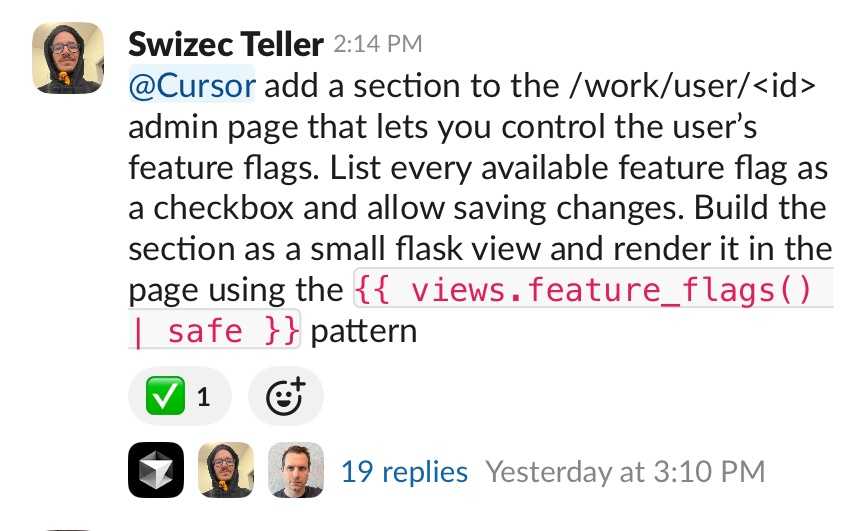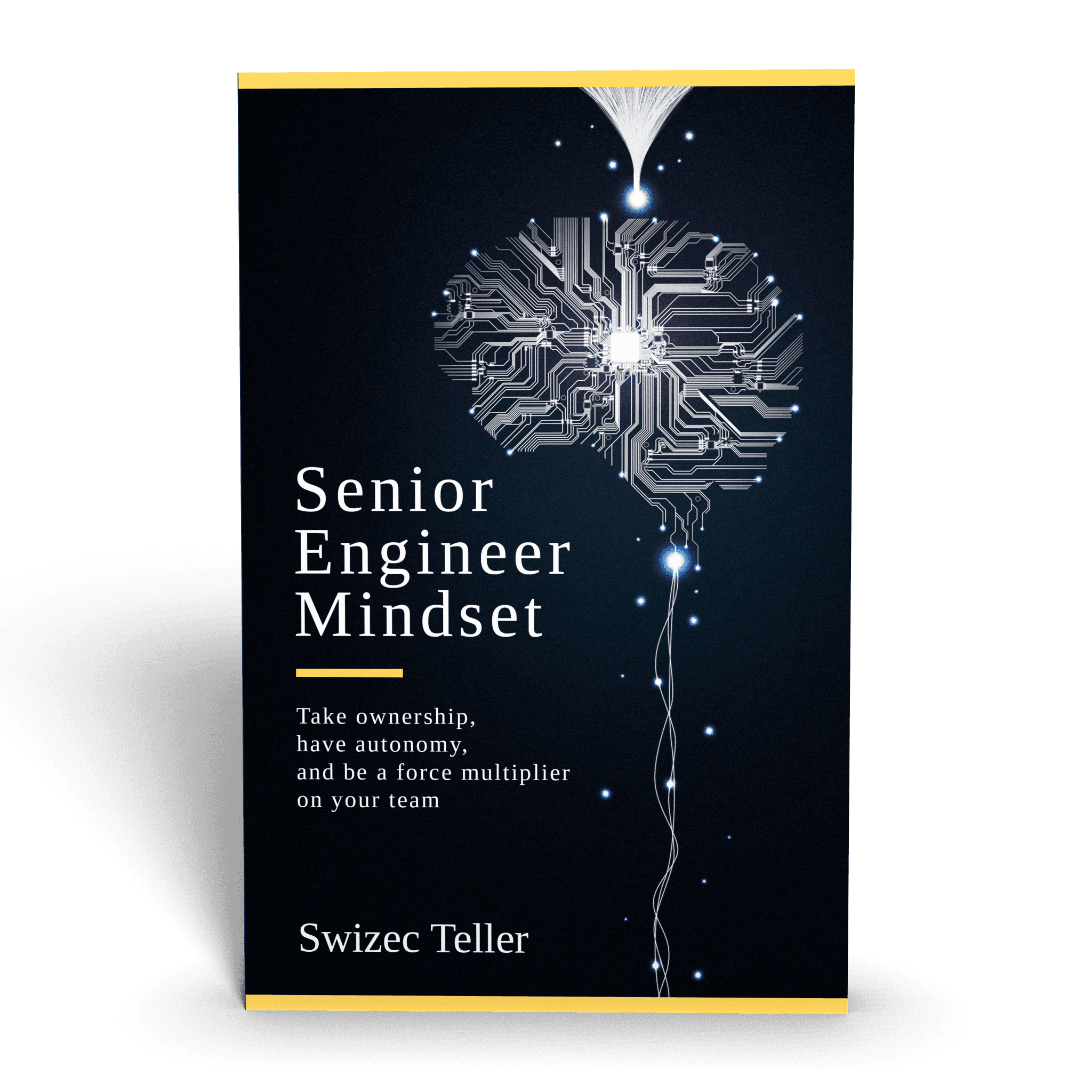A couple weeks ago Cursor launched a Slack integration and ... wow. First time I can say AI changed my workflow.
What's a slack cursor background agent anyway?

You say @cursor do my work in Slack and
- some infrastructure spins up,
- clones your target repository
- runs a Cursor agent with your prompt
- opens a pull request
- messages you with the link
Agent is the same as what you see running in Cursor. An LLM loop that "thinks", executes tasks, and edits code.
You can ask for followup changes in the thread and keep tabs on what happened with the PR. The bot messages back when the PR is merged or approved.
How the Slack integration changed my workflow
As a lead/manager I have a lot on my mind and less and less time to code. Getting more than 20 minutes of focus time feels like a luxury. Entire days happen where I write zero code.
Part of that is keeping threads running in my brain.
I think my worst habit right now is this:
— Swizec Teller (@Swizec) June 1, 2025
1. open emails/slack when I��’m tired,
2. see important messages,
3. decide I’ll deal with it later,
4. but keep ruminating while doing other stuff
Makes attention spread too thin. How stop?
If I see a ping, it opens a thread in my brain. Have to keep thinking about it until I do the thing – write it down, hand it off, get it done. It's my job to make sure loose ends don't stay loose. Unless the problem has an owner, I'm the owner.
The traditional approach to not-a-priority
Many of those pings are urgent but not important, important but not urgent, or even not important and not urgent. Things that should get done but honestly meh.

We don't delete ideas – that's what the asana/jira abyss is for! Deleting them makes people feel unheard. Saving them in a box you'll never look at lands better.
You get these pings, all day every day from everyone. You collect things in your brain and feel frazzled. Eventually you find patterns and turn those ideas into projects. Small things get jotted down so you don't forget, but they'll never be a high enough priority to get worked on.
Your task tracker becomes a wasteland.
The new approach
Just get it done 🤯
Don't even bother with a task tracker or delegation or opening an IDE. The same time it takes you to make a ticket and link the relevant context, you can @cursor and tell it what to do.
Works best when you know how to do the thing or it's small enough to be obvious. I like to give fairly detailed instructions on how to do the task.
Like I'll say "@cursor write a migration to update column in such and such table" or something like "@cursor add this feature, make it do the thing, follow pattern from this other feature in that file". A lot like how you'd work with a junior engineer who can code, knows how to find the right files and interpret fuzzy context, but can't do architecture.
More things are worth doing
The biggest improvement is that we don't have smol tasks lying around. Those kill focus by being a type of work in progress.
Get it done and move on.
This has made more things worth doing. Nice-to-have ideas that we'd never get around to building can now get done with a Slack message. Even whole features.

We would never have made time to build a feature flag management UI. Never. There are so many more important things we need to get done.
But now we have it.
Cheers,
~Swizec
PS: the agent quickly falls apart when you need to iterate on its solution or it needs to work in a messy part of the code. Best for greenfield additions and small tweaks. I once wasted 2 hours untangling the mess it made after I asked for more than it could handle.
Continue reading about Cursor background agents in Slack changed my workflow
Semantically similar articles hand-picked by GPT-4
- Coaching AI to write your code
- AI fills my day with busywork
- Meetings – a senior engineer's secret weapon
- Coordinating at the end is too late
- Make mistakes easy to fix
Learned something new?
Read more Software Engineering Lessons from Production
I write articles with real insight into the career and skills of a modern software engineer. "Raw and honest from the heart!" as one reader described them. Fueled by lessons learned over 20 years of building production code for side-projects, small businesses, and hyper growth startups. Both successful and not.
Subscribe below 👇
Software Engineering Lessons from Production
Join Swizec's Newsletter and get insightful emails 💌 on mindsets, tactics, and technical skills for your career. Real lessons from building production software. No bullshit.
"Man, love your simple writing! Yours is the only newsletter I open and only blog that I give a fuck to read & scroll till the end. And wow always take away lessons with me. Inspiring! And very relatable. 👌"
Have a burning question that you think I can answer? Hit me up on twitter and I'll do my best.
Who am I and who do I help? I'm Swizec Teller and I turn coders into engineers with "Raw and honest from the heart!" writing. No bullshit. Real insights into the career and skills of a modern software engineer.
Want to become a true senior engineer? Take ownership, have autonomy, and be a force multiplier on your team. The Senior Engineer Mindset ebook can help 👉 swizec.com/senior-mindset. These are the shifts in mindset that unlocked my career.
Curious about Serverless and the modern backend? Check out Serverless Handbook, for frontend engineers 👉 ServerlessHandbook.dev
Want to Stop copy pasting D3 examples and create data visualizations of your own? Learn how to build scalable dataviz React components your whole team can understand with React for Data Visualization
Want to get my best emails on JavaScript, React, Serverless, Fullstack Web, or Indie Hacking? Check out swizec.com/collections
Did someone amazing share this letter with you? Wonderful! You can sign up for my weekly letters for software engineers on their path to greatness, here: swizec.com/blog
Want to brush up on your modern JavaScript syntax? Check out my interactive cheatsheet: es6cheatsheet.com
By the way, just in case no one has told you it yet today: I love and appreciate you for who you are ❤️
